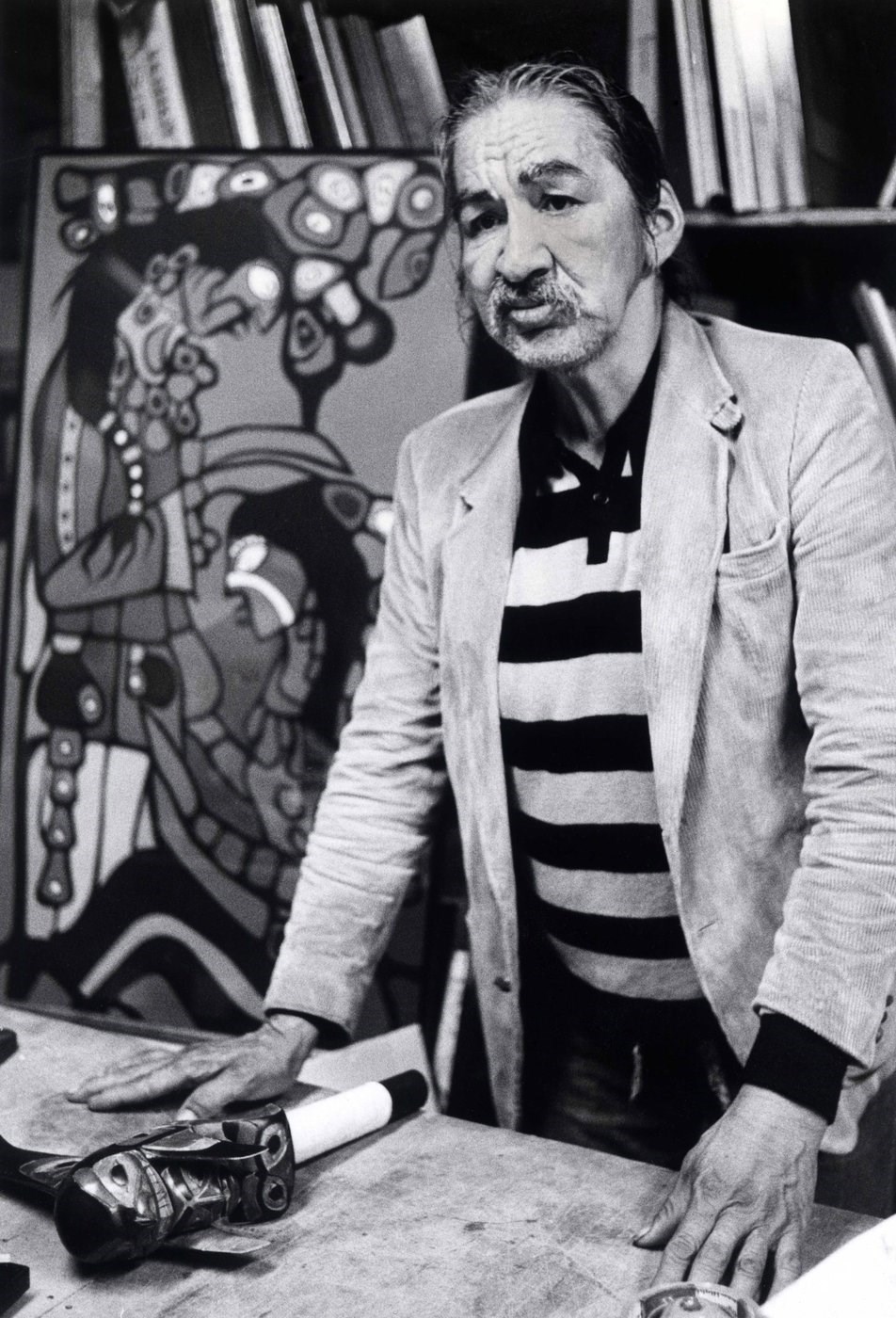A key player in a massive art fraud scheme oversaw an "assembly line"-like production of fake Norval Morrisseau paintings, court heard Tuesday, as the Thunder Bay, Ont., man pleaded guilty to two charges.
David Voss, 52, pleaded guilty to one count of forgery and one count of uttering forged documents. An agreed statement of facts filed with the court said Voss oversaw the creation and distribution of thousands of forged Morrisseau artworks from 1996 to the mid-2010s.
Morrisseau, also known as Copper Thunderbird, was a trailblazer for contemporary Indigenous artists across Canada and had received numerous awards and honours, including the Order of Canada. He died in 2007.
A Thunder Bay courtroom heard Tuesday that Voss initially forged Morrisseau artworks on his own, but his operation later "grew to resemble an assembly line in which multiple painters assisted."
Those painters and other witnesses interviewed by police described a process in which Voss would draw an outline of a painting in pencil and then use a letter-coded system to indicate how the artwork should be painted – G for green, B for blue and so on.
"The painters were paid to apply the paint in accordance with this 'paint-by-numbers' process," the statement of facts said, noting that forensic analysis of some of those paintings later revealed the underlying letter codes and pencil markings.
Court heard that Voss eventually abandoned this system and returned to producing fake Morrisseau paintings on his own. He also applied Morrisseau's name in Cree syllabics on the front of the artwork and a dry-brush English signature on the back, according to the court document.
Court heard that more than 1,500 so-called "Voss ring" forgeries have been identified to date but an unknown number of them remain in circulation.
The forgeries were consigned or sold by Voss to distributors and auction houses across Canada "where they were purchased by unsuspecting members of the public," the agreed statement of facts said, adding that Voss told purchasers he had obtained the artwork either directly or indirectly from Morrisseau.
Eight people were initially charged last year in what's been described as one of the largest art fraud investigations in the world.
Another key figure in the case, Thunder Bay resident Gary Lamont, pleaded guilty to two charges and was handed a five-year sentence in December.
Lamont knew Morrisseau personally for 30 years and the artist had occasionally given him some of his original artwork.
But from 2002 onwards, Lamont oversaw production of “hundreds of artworks” that were falsely attributed to Morrisseau and that carried forged signatures associated with the artist, court heard at the time.
When Lamont was sentenced, the Morrisseau estate said in a statement that the art fraud had a massive financial and emotional toll, diminishing the value of the artist's original paintings and tarnishing the reputation of the Morrisseau family.
This report by The Canadian Press was first published June 5, 2024.
Sonja Puzic, The Canadian Press



